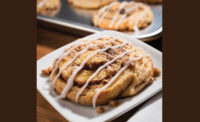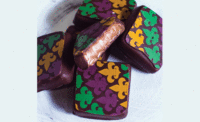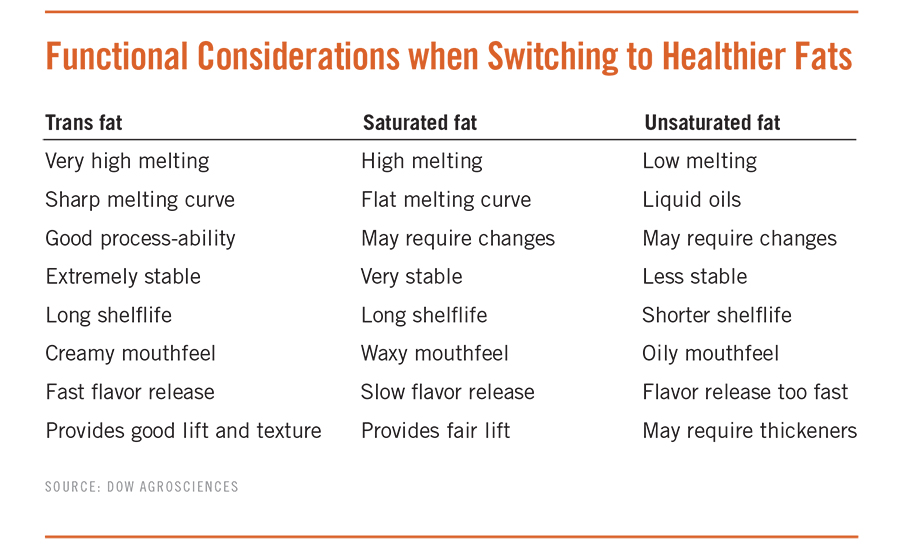Fat, Oil Solutions
Experts help Prepared Foods R&D Seminar attendees eliminate partially hydrogenated oils, embrace new options


Functional considerations such as shelflife and mouthfeel for trans fat, saturated fat, and unsaturated fat.

The properties of different types of food are achieved with the right fat-melting properties.



Formulating without PHOs: Challenges and Opportunities
Public health and nutrition guidance over fats has changed over the years, beginning with the 1980s, where the guidelines were to avoid too much fat, saturated fat and cholesterol. During this time, food manufacturers transitioned from tropical to hydrogenated oils. Through the 1990s, recommendations were still for a diet low in saturated fats.
However, emerging science was also showing the negative health effects of trans fats. In the 2000s, the Institute of Medicine recommended elimination of trans fats, while US dietary guidance was low intake of saturated fat and moderate total fat intake. In 2005, the Dietary Guidelines first recommended trans fat consumption to be as low as possible and saturated fat to be less than 10% of calories.
The US and Canada also implemented a trans fat-labeling requirement in this decade. In 2008, New York City and California both banned trans fats from foods sold in these areas. Dietary guidelines recommended saturated fats at less than 10% of calories, and to replace them with unsaturated fats, which have positive health benefits.
Finally, in 2013, FDA proposed removal of partially hydrogenated oils (PHOs) from GRAS status. “Between 2004-2011, an 85% reduction in partial hydrogenation of oils and a 29% reduction in full hydrogenation occurred,” explained Asim Syed, director food applications R&D, at Dow AgroSciences, in a Prepared Foods R&D Applications Seminar presentation titled “Formulating Processed Foods without PHOs: Challenges and Opportunities.”
PHOs’ functionality in foods can be difficult to replace, as it provides better melt profile, longer shelflife and better stability than many other fats and oils. Challenges exist in reformulating without PHOs, and there are considerations when switching to healthier fats.
“Depending on the functionality needed—whether for baking, spraying, frying or in spreads—there are solutions to be found in interesterified blends, palm and high-oleic oil blends, or liquid oils with high-melting emulsifiers,” offered Syed.
“Oils good for use in spraying on nuts and fruits, for example, or for crackers or croutons include high-oleic canola oil, double-fractionated, palm olein, high-oleic sunflower oil or coconut oil,” added Syed. High-oleic canola and high-oleic canola-corn blends are recommended for frying in foodservice and industrial applications. And margarines benefit from use of palm, palm kernel interesterified blends, palm stearines, high-melting emulsifiers, high-oleic canola and non-fatty, fat-gelling agents.
Formulations can go from 1.5g trans fat per serving to 0g, while also decreasing saturated fat. Other critical factors also can be addressed with options that are available. For example, omega-9 canola oils can replace partially hydrogenated soybean oil in frying French fries, while reducing trans fat from 5g to 0.25g/serving and saturated fat from 7g to 1.8g/serving. Other products have similar successes in trans fat reduction.
Consumers and regulators are pushing PHOs out of the food supply, so industry is innovating to find healthier alternatives. Innovations in plant breeding and oil processing are providing the best solutions thus far.
“Formulating Processed Foods Without PHOs–Challenges & Opportunities,” Asim Syed, director food applications R&D, Dow AgroSciences,
asyed@dow.com, 317-337-4605
—Summary by Elizabeth Pelofske, Contributing Editor
Solutions for Replacing Partially Hydrogenated Vegetable Oils
The history of dietary fat recommendations going back to the 1950s until the present has been conflicting. During the 1950s, saturated fat was linked to heart disease; in the 1970s, total fat and LDL cholesterol were blamed, leading to low-fat diets and the fat-free food craze of the 1980s. However, after they dominated the market in the 1980s, it was becoming clearer that trans fats were the culprits. Trans fat finally became required on labels in 2006; in 2013, FDA considered removal of GRAS status for PHOs.
[The FDA has since made a final determination that there is no longer a consensus among qualified experts that partially hydrogenated oils (PHOs), the primary dietary source of trans fat, are generally recognized as safe (GRAS).] The compliance date is no later than June 18, 2018. Today, it is clear that dietary fat recommendations have never been accurate nor well-understood.
“’The Nurses’ Health Study’ showed that saturated fats have a neutral effect on heart disease. Trans fat consumption from PHOs, on the other hand, showed significantly increased risk of heart disease,” explained Gerald McNeill, vice president of R&D at IOI Loders Croklaan, in his recent PF R&D Application Seminar.
“Exposure of trans fats and PHOs comes from cakes, frostings, cookies, pies, coffee creamers, frozen pizza, margarine and refrigerated spreads, and savory snacks. So there has been significant effort into reformulating out the PHOs,” said McNeill.
Palm oil and palm kernel oil have been helpful in PHO replacement. Palm oil is a naturally solid fat with a crystal structure—ideal for creaming and promoting a smooth texture—with no chemical process like hydrogenation necessary.
“Palm oil is also non-GMO and has a long shelflife, containing a balanced content of saturated and monounsaturated fats with no linolenic acid. Versatile, it is available in an unlimited variety of textures, including liquid oils,” added McNeill.
“Palm oil fractionation also has added versatility,” McNeill stated, allowing for both hard solid and liquid fractions.
Blending palm oil with palm kernel oil has increased versatility even more, leading to fractions of the blend, interesterification, double fractionation and hydrogenation.
Different components and blends allow for custom functionality for many applications. Palm kernel oil fractions include palm kernel stearin and palm kernel olein. Palm oil is semi-solid at room temperature, while the hard-fraction palm stearine is solid at higher temperatures. The fraction called super olein is mostly liquid at room temperature and produced by double fractionating palm olein. Palm kernel stearine has a very steep melting profile and is fast to crystallize.
Solid Fat Content (SFC) of the palm, or palm kernel oil or fraction, gives the right fat for the right application. For example, puff pastry requires light, elevated and uniform layers, and croissants need large air cells with a golden, flakey crust. Cookies should be soft and chewy, pie crust tender and flakey. Donuts are best when moist but not greasy, and cake with soft, fluffy texture and tight uniform air cells. All of these properties are achieved with the right fat-melting properties.
With the FDA coming down on PHOs, a wide range of functional, palm-oil based products are available today with drop-in solutions and tailor-made options. Reduced saturated fats, shortenings for baked goods and a selection of confectionery fats for chocolate coatings are available.
“Solutions for Replacing Partially Hydrogenated Vegetable Oils,” Gerald McNeill, vice president of R&D, IOI Loders Croklaan, Gerald.
mcneill@ioiloders.com, 815-730-5200
—Summary by Elizabeth Pelofske, Contributing Editor
Looking for a reprint of this article?
From high-res PDFs to custom plaques, order your copy today!








